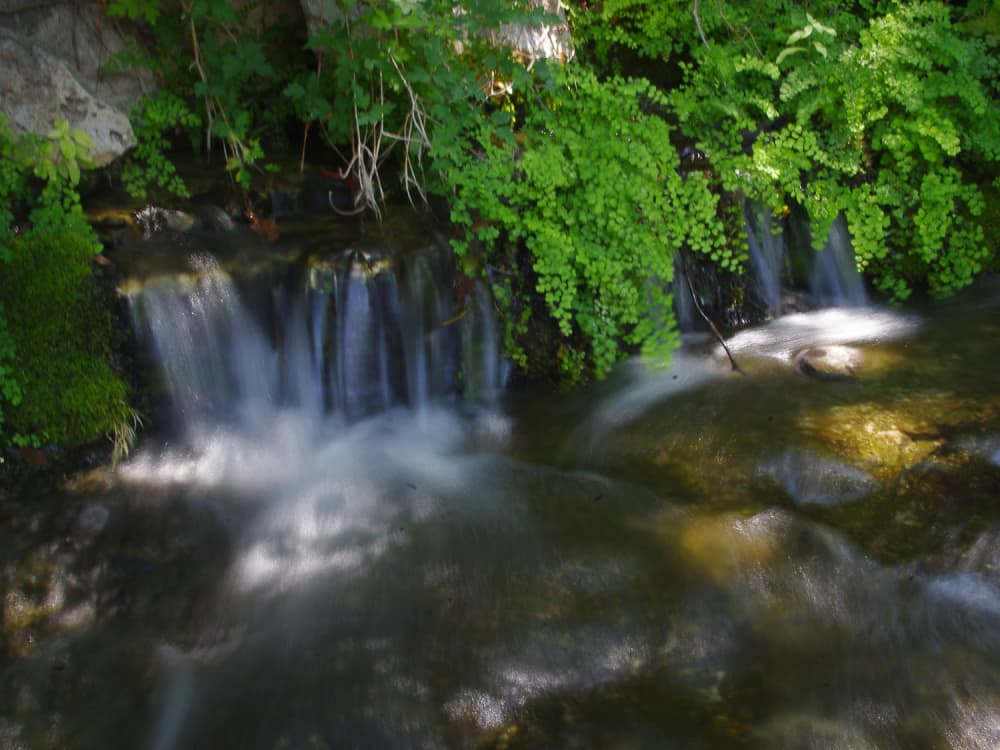Off the beaten path? What path?
Devils advocate: Solitude is set ablaze in West Texas desert oasis
 Ferns grow in cool places, where springs flow from the canyon walls.Photo by Stephan Lorenz
Ferns grow in cool places, where springs flow from the canyon walls.Photo by Stephan Lorenz The region lies in a transitional zone where the Hill Country to the east gradesinto the Chihuahuan Desert to the west.Photo by Stephan Lorenz
The region lies in a transitional zone where the Hill Country to the east gradesinto the Chihuahuan Desert to the west.Photo by Stephan Lorenz The Devils River is popular with canoeists and kayakers.Photo by Stephan Lorenz
The Devils River is popular with canoeists and kayakers.Photo by Stephan Lorenz There are many reminders within the park that this used to be a working ranch.Many of the rugged canyons protect Native American archeological sites.Photo by Stephan Lorenz
There are many reminders within the park that this used to be a working ranch.Many of the rugged canyons protect Native American archeological sites.Photo by Stephan Lorenz Springs pour millions of gallons of the purest water into the river year-round.Photo by Stephan Lorenz
Springs pour millions of gallons of the purest water into the river year-round.Photo by Stephan Lorenz The Devils River forms an oasis in this otherwise arid country.Photo by Stephan Lorenz
The Devils River forms an oasis in this otherwise arid country.Photo by Stephan Lorenz Within the park, about one mile of river is accessible.Photo by Stephan Lorenz
Within the park, about one mile of river is accessible.Photo by Stephan Lorenz Over 20 miles along winding gravel will bring visitors to the heart of thissparsely settled country.Photo by Stephan Lorenz
Over 20 miles along winding gravel will bring visitors to the heart of thissparsely settled country.Photo by Stephan Lorenz Today the park is surrounded by private land.Photo by Stephan Lorenz
Today the park is surrounded by private land.Photo by Stephan Lorenz Loma Alta is the closest service station, but offers just the basics.Photo by Stephan Lorenz
Loma Alta is the closest service station, but offers just the basics.Photo by Stephan Lorenz The vegetation is surprisingly lush within the floodplain of Dolan Creek.Photo by Stephan Lorenz
The vegetation is surprisingly lush within the floodplain of Dolan Creek.Photo by Stephan Lorenz It’s a long haul west from Houston to reach the remote Devils River StateNatural Area.Photo by Stephan Lorenz
It’s a long haul west from Houston to reach the remote Devils River StateNatural Area.Photo by Stephan Lorenz The few trails in the state natural area are open to hiking and mountain biking.Photo by Stephan Lorenz
The few trails in the state natural area are open to hiking and mountain biking.Photo by Stephan Lorenz
We couldn’t say that we hadn’t been warned. The place was remote — a long, long way out there. Seven hours into the drive, with darkness falling quickly, we experienced it firsthand: Devils River State Natural Area is definitely off the beaten path.
No wonder less than 1,000 visitors a year find themselves among the stark canyons, wilderness vistas and refreshing springs. It’s a pack-it-in, carry-it-out kind of place. But those who do make the long trip are rewarded with solitude, peaceful camping, and empty swimming holes.
Far, far away from those city lights
After a long day hauling west, we hadn’t even yet arrived ourselves. Running out of daylight along U.S. Route 277, we eventually turned onto the caliche of Dolan Creek Road in the dark. The rough gravel track wound through 22 miles of increasingly rugged country toward the state natural area.
Stars were ablaze above black hills by the time we set up camp. The park ranger, still working at 10 p.m., informed us that it was going to be a 'busy' weekend, with at least four other campers present.
“Busy” and “crowded” took on another definition out here.
The park encompasses nearly 20,000 acres of dense brush, limestone cliffs, plateaus, and springs that form an oasis in the desert. Hidden among rugged terrain are many archeological sites, including caves with pictographs, open only by reserved tour.
About one mile of riverfront is accessible within the park, offering a put-in for paddlers, swimmers and fishermen.
The devil's in the details
Since the forecast called for 104 degrees, we wasted no time the next morning in making our way to the river. To decrease the impact on the ecologically fragile area, visitors must hike to the river along a gravel road. The lure of cold springs and deep swimming holes put a spring in our step, belying the heat baking the mesquite flats around us.
Upon seeing the narrow ribbon of water from high rimrock, the early explorer Colonel John Coffee Hays exclaimed that it looked like "the devil’s river" to him. The name stuck.
Today, it's recognized as one of the last free-flowing rivers in Texas, with some of the cleanest water in the world. It flows unhindered for 94 miles, through sparsely settled Val Verde County before emptying into Amistad Reservoir. It has a 40-mile floatable stretch, frequented by canoeists and kayakers.
Quenching the thirst for nature
We wandered upstream and soon found several springs flowing from the steep cliffs — some of which poured 22,000 gallons of water a minute into the river. We filled bottles with pure water spilling from fern-lined grottoes.
A little further upriver stood a grove of stately oaks and sycamores, and we waited out the peak of the afternoon heat there. Listening to frogs calling sporadically over the constant gurgle of water made it easy to lounge for a couple of hours.
Strong winds and solid cloud cover on day two allowed us to hike in the desert. The park has a few shorter trails, and a 12-mile loop open for mountain biking and hiking.
We tackled a short section along Dolan Creek that passed through brushland and ended at an impressive pecan grove. In sync with the wilderness character of the park, the majority of trails are poorly maintained, so be prepared.
Know before you go
Before visiting the park, it is necessary to make camping reservations. Keep in mind that summer temperatures are extremely high — bring enough food and water.
Dolan Creek Road can close during flash floods, so be sure to get updates on current conditions. If driving from Houston, gas up in Rocksprings. The closest gas station at Loma Alta doesn’t offer more than a few sodas and sketchy bathrooms.
It’s a long way, so once you’re out at the natural area, spend a few nights and enjoy the solitude.

 The newly opened Totally Tejano Hall of Fame and Museum includes a growing collection of memorabilia. Photo by Edmond Ortiz
The newly opened Totally Tejano Hall of Fame and Museum includes a growing collection of memorabilia. Photo by Edmond Ortiz